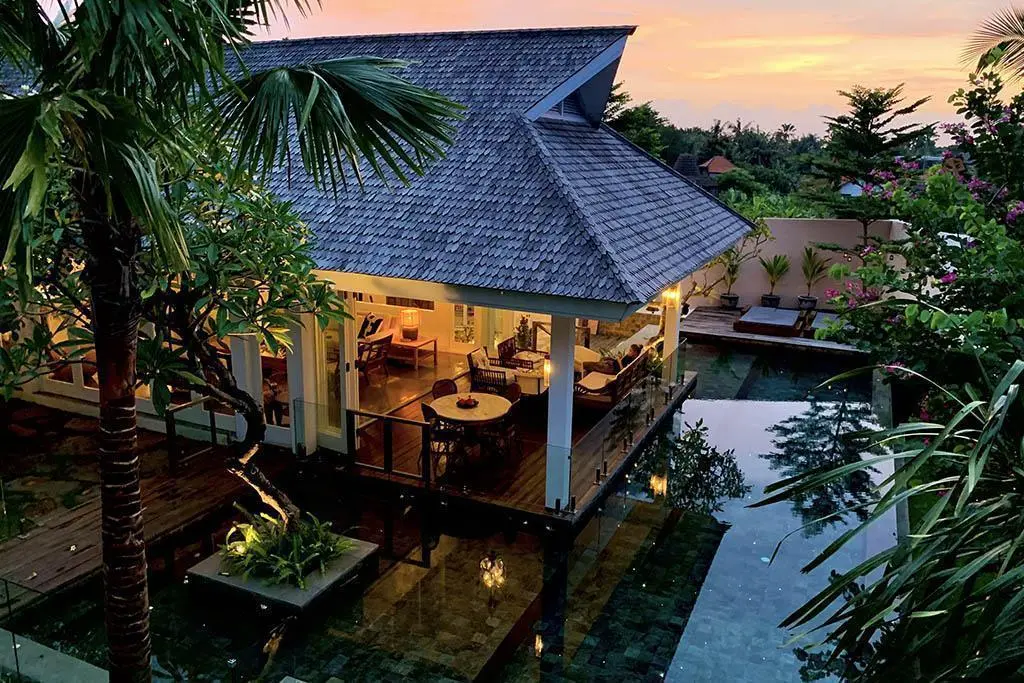
The island of Bali, Indonesia, is home to beautiful and unique Balinese architecture, a vernacular architectural tradition of Balinese people that has been influenced by Balinese culture and pre-Hindu elements. This centuries-old architectural tradition has been further developed and transformed into a contemporary Balinese style, now known as one of the most popular Asian tropical architecture.
Balinese architecture is a perfect combination of traditional aesthetic principles, an abundance of natural materials available on the island, the famous artistry and craftsmanship of its people, and international architectural influences. The designs, which seek to be in harmony with the environment, are characterized by the use of organic materials such as thatch roofing, bamboo poles, woven bamboo, coconut wood, teak wood, brick and stone. The thatched roof usually uses ijuk, dried coconut or rumbia leaves, or sirap roof. The walls are usually made of stones, red bricks, while sandstone and andesite stone are carved as ornamentation.
Balinese architecture is developed from Balinese ways of life, their spatial organization, and their communal-based social relationships, as well as philosophy and spirituality influenced its design. The Balinese design is based on tripartite divisions, which are the rules of space division and zoning. The three parts of realms are described as Nista Mandala – the outer and lower mundane less-sacred realm, Madya Mandala – the intermediate middle realm; and Utama Mandala – the inner and higher most important sacred realm.
In traditional Balinese architecture, much open space is allowed. It consists of a spacious courtyard with many small pavilions ringed by a wall to keep out evil spirits and decorated with guardian statues. Balinese temples and palaces are exquisitely decorated with rich ornamentations, both wooden and stone sculpting, which usually depict floral patterns. Balinese sculpture often served as gate guardians as twin dvarapalas flanking entrances. The gates themselves are richly decorated with kala’s head, floral ornaments, and vajra or ratna pinnacles.
Balinese architecture recognizes two types of gates, the candi bentar split gate and paduraksa or kori roofed gates. Balinese gardens are usually created in a natural tropical style filled with tropical decorative plants in harmony with the environment. Some water gardens, however, are laid out in a formal design, with ponds and fountains.
As a Bali-based construction company that is committed to excellence, NATA is dedicated to delivering top-quality construction services efficiently. With a team of highly integrated builders, architects, designers, consultants, MEP specialists, and project managers, NATA is known for creating beautiful architectural designs and buildings that embody the unique style of Balinese architecture.
Whether you want to build a Balinese-style house, cottage, villa or hotel, NATA can help bring your building dreams to life. A passion for excellence, energy, creativity, and a commitment to safety and quality characterizes NATA’s approach. The company’s goal is to help clients make the most of their investments, and every design and construction project is completed with integrity and transparency, earning the trust and confidence of every client.
Experience the unique and stunning Balinese architecture, and let NATA help you create your dream building that embodies the unique style and beauty of Balinese architecture.